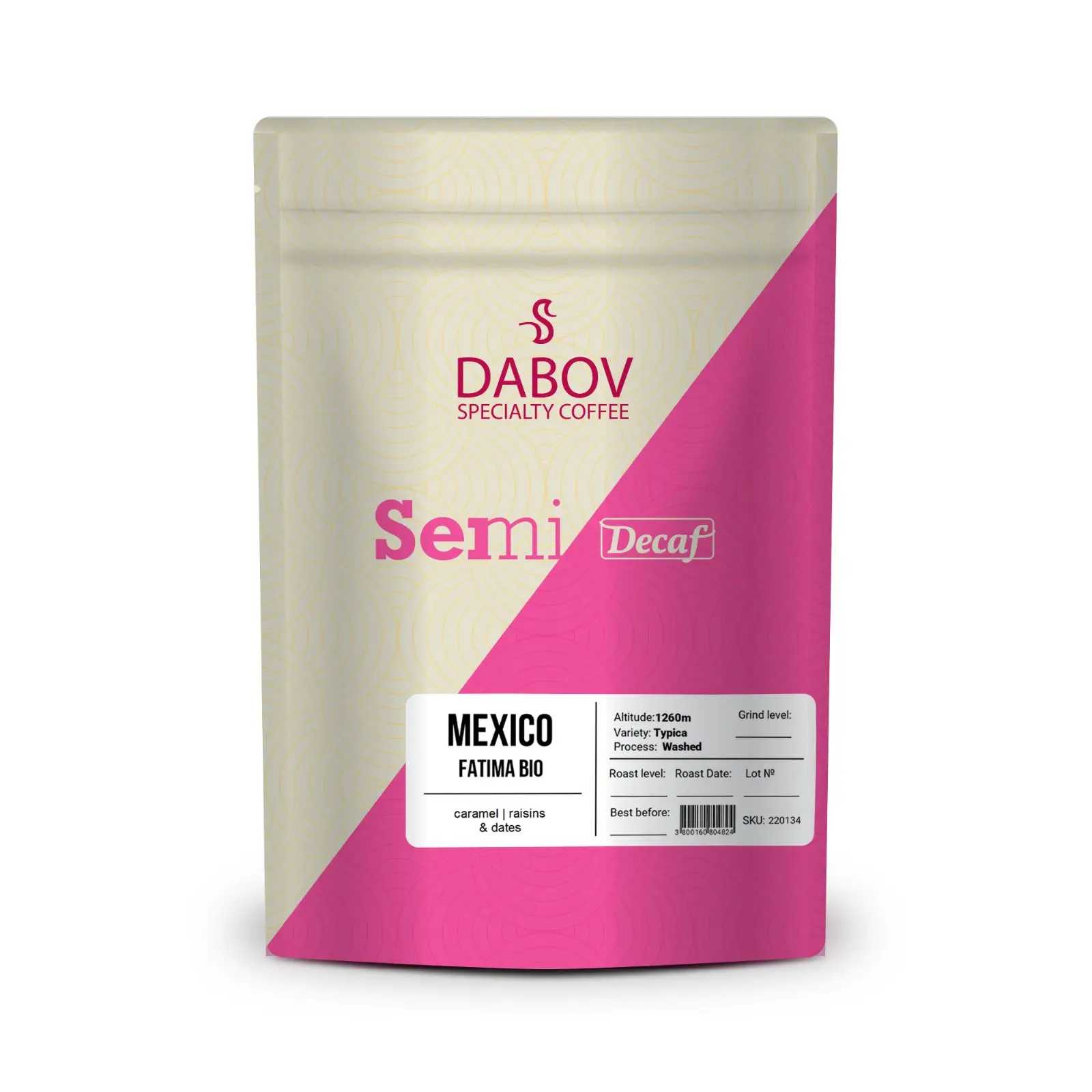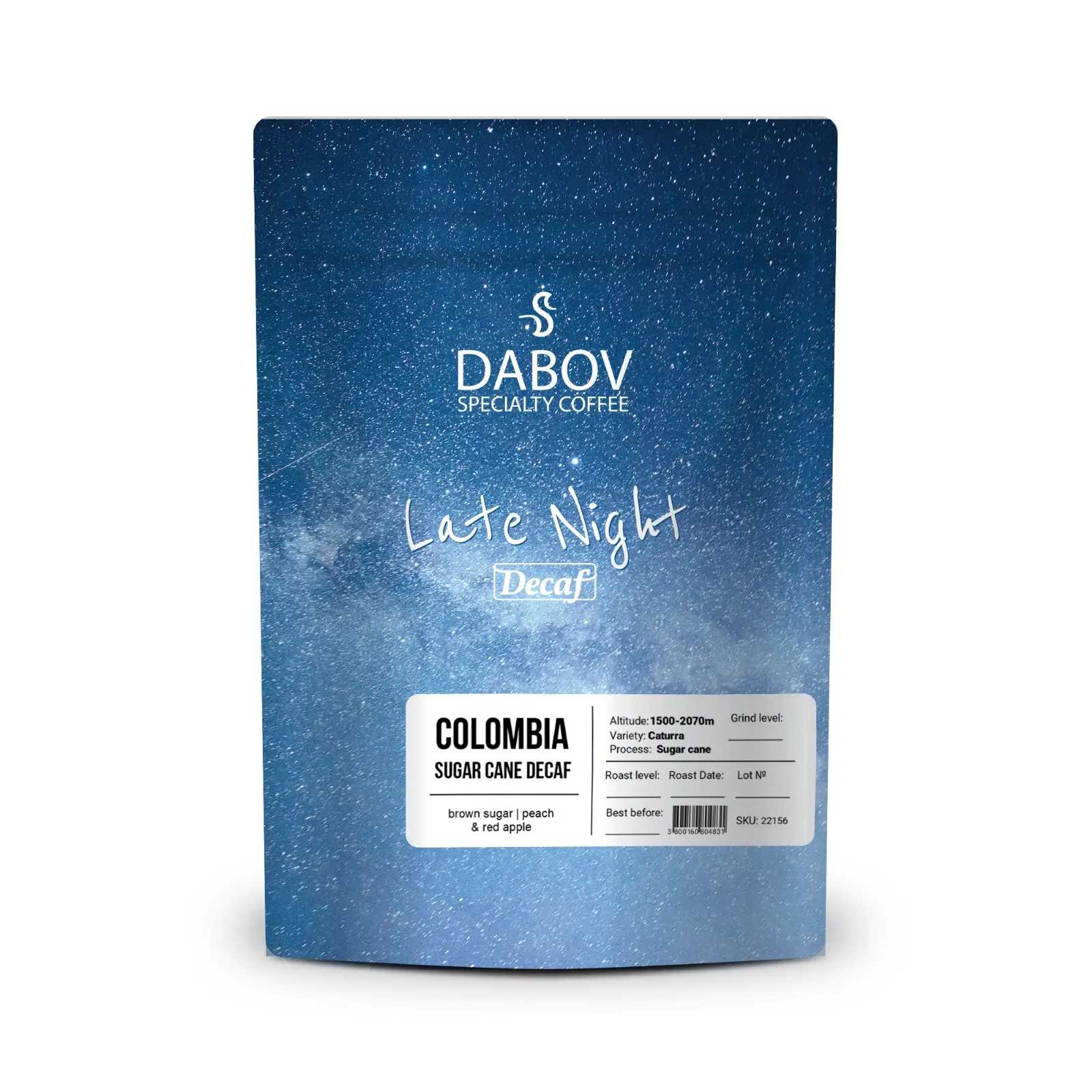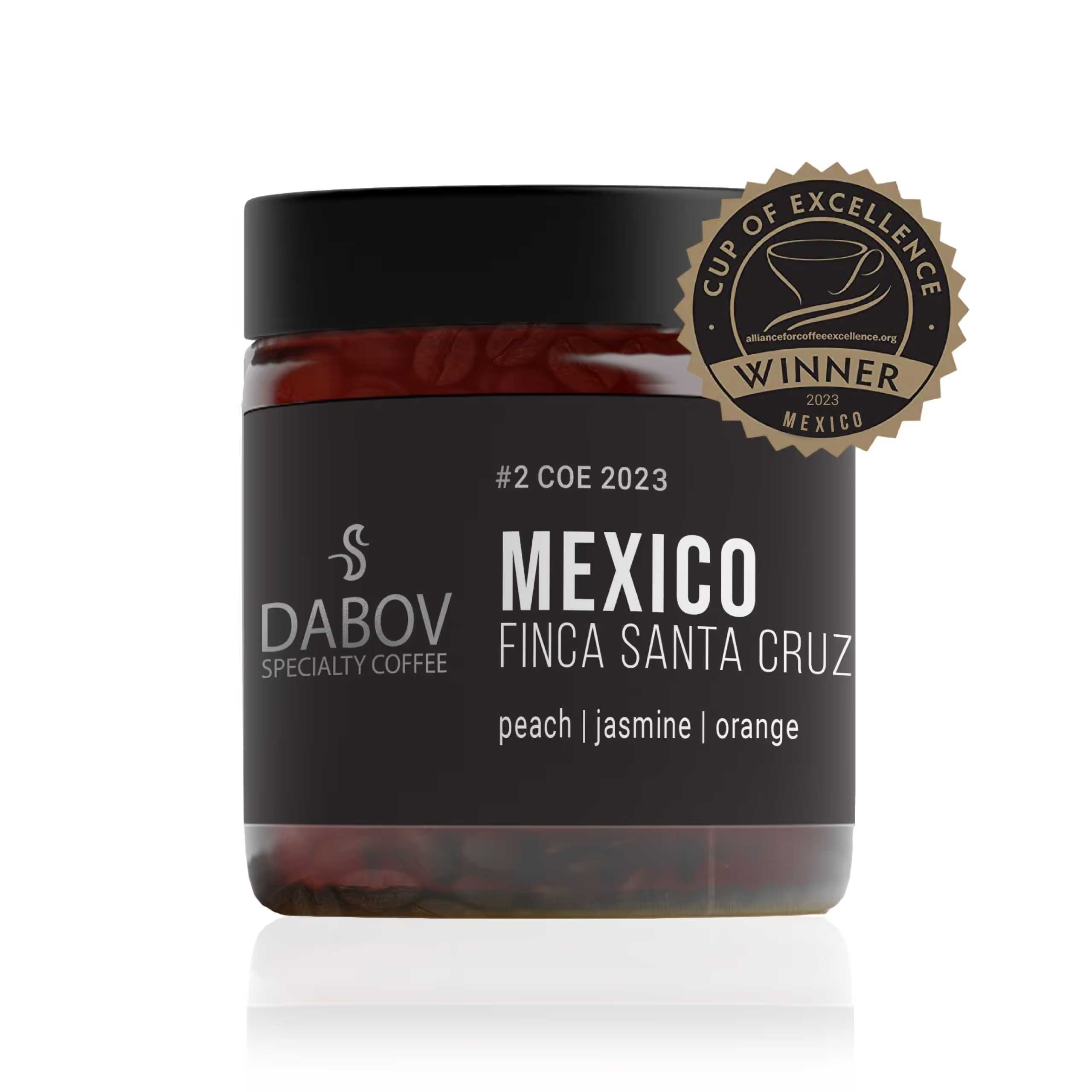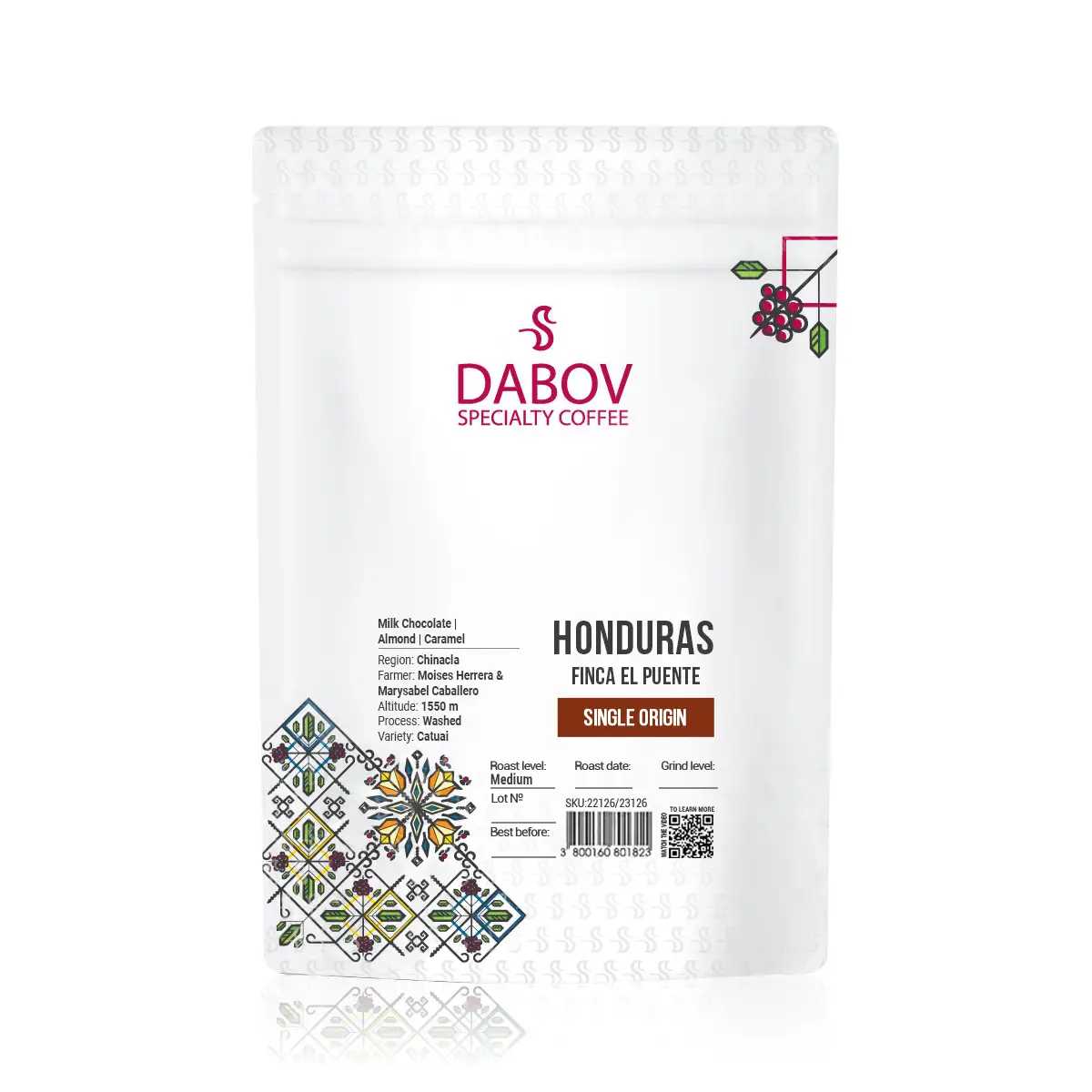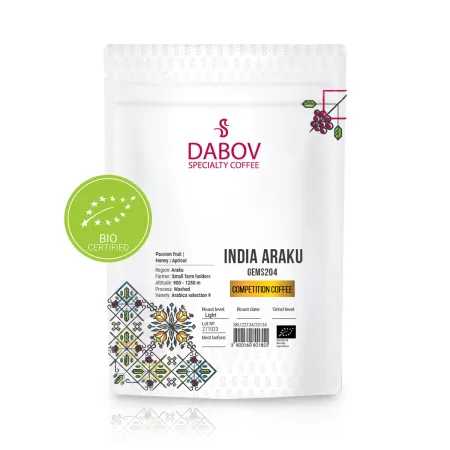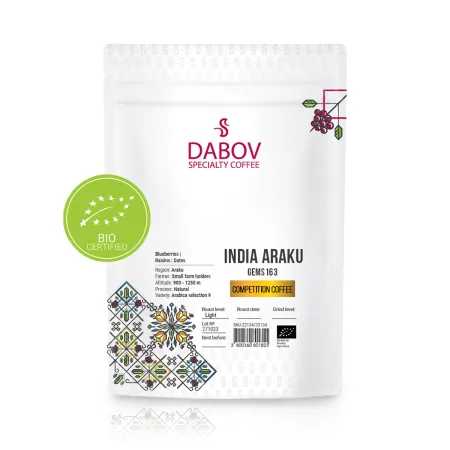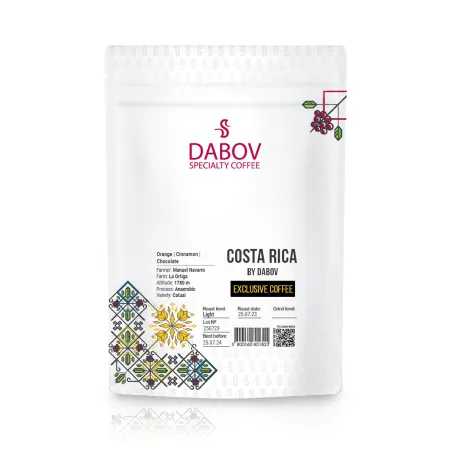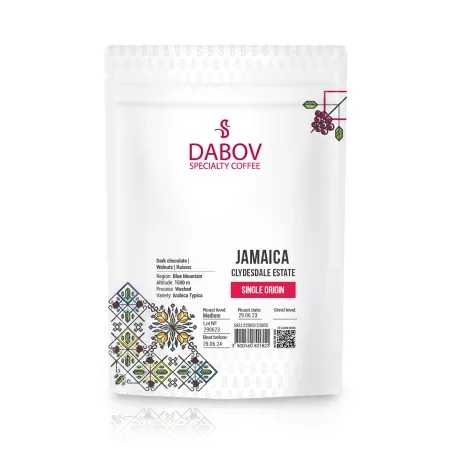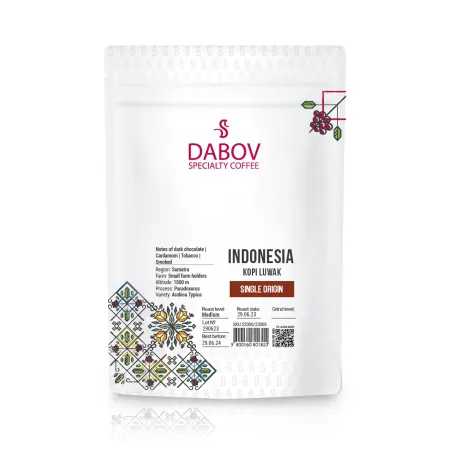Why Coffee Roasting Matters The Key to Great Flavor
Coffee has taken the world by storm, and its rich flavors often captivate our senses. Yet, many coffee lovers overlook the crucial aspect of coffee roasting, which is the true key to flavor enhancement. This article dives deep into the art and science of coffee roasting, revealing how the roasting process transforms green beans into the delightful brews we cherish. We'll explore the chemistry behind roasting, the various roasting techniques, and how different levels of roasting influence taste. Whether you're a seasoned barista or just enjoy your morning cup, understanding coffee roasting can elevate your coffee experience to new heights. Discover tips, tricks, and essential tools that will help you achieve the perfect roast and taste your coffee like never before.
Coffee, the beloved beverage that fuels millions of people worldwide, holds a secret that many enthusiasts overlook: the art and science of roasting. While the origin of beans and brewing methods often take center stage, it's the roasting process that truly unlocks the potential for an extraordinary cup of coffee. This transformative journey from raw, green beans to aromatic, flavorful roasted gems is the key to unlocking the complex world of coffee flavors. In this comprehensive exploration, we'll delve deep into the importance of coffee roasting, uncover the intricacies of flavor development, and provide you with expert insights to elevate your coffee experience.
The Importance of Coffee Roasting
Coffee roasting is far more than just a step in coffee production; it's a crucial process that fundamentally alters the chemical composition of coffee beans, directly impacting the flavor, aroma, and overall quality of the final brew. At its core, roasting is the application of heat to green coffee beans, triggering a series of complex chemical reactions that transform these relatively flavorless seeds into the rich, aromatic beans we know and love.
The importance of roasting cannot be overstated. It's during this process that the characteristic flavors of coffee develop, the beans' structure changes, and the compounds responsible for the beverage's allure are created. Without roasting, coffee would be a far cry from the diverse, nuanced drink we enjoy today. The roasting process is where science meets artistry, allowing roasters to coax out specific flavor profiles and create unique taste experiences.
One of the most significant chemical changes during roasting is the Maillard reaction. This complex series of reactions between amino acids and reducing sugars is responsible for the browning of the beans and the development of hundreds of flavor compounds. As the beans heat up, sugars and amino acids within them begin to react, forming new molecules that contribute to the coffee's flavor and aroma. This process is similar to what occurs when you sear a steak or toast bread, creating those desirable browned flavors.
In addition to the Maillard reaction, other important chemical processes occur during roasting. Caramelization of sugars begins at higher temperatures, contributing to the sweetness and body of the coffee. Acids within the beans break down, changing the overall acidity profile. Oils start to emerge from within the bean structure, bringing with them aromatic compounds that contribute to the coffee's bouquet.
The extent to which these reactions occur is largely determined by the roast level, which in turn significantly influences the flavor profile of the coffee. Let's explore how different roast levels affect the taste:
- Light Roast: Light roasts are characterized by their light brown color and lack of oil on the bean surface. These roasts typically showcase the bean's original flavor characteristics, often described as bright, acidic, and complex. Light roasts tend to have higher acidity and often feature floral, fruity, or herbal notes. The beans' origin flavors are most pronounced in light roasts, making them popular for single-origin coffees where the unique characteristics of a specific region or farm are desired.
- Medium Roast: As we move into medium roasts, the beans take on a richer brown color, and some oils may begin to appear on the surface. Medium roasts strike a balance between acidity and body, often described as having a more rounded flavor profile. The original characteristics of the bean are still present but are complemented by the flavors developed during the roasting process. You might detect notes of nuts, chocolate, or caramel alongside the bean's inherent flavors.
- Dark Roast: Dark roasted beans are dark brown to nearly black and have a shiny, oily surface. At this level, much of the beans' original flavor characteristics have been overshadowed by the flavors imparted by the roasting process. Dark roasts typically have a bold, full body with a decrease in acidity. Flavors tend towards bittersweet, smoky, or even burnt notes. The oils that have migrated to the surface of the beans contribute to a heavier mouthfeel in the brewed coffee.
Understanding these roast levels and their impact on flavor is crucial for both coffee professionals and enthusiasts. It allows for the creation of specific flavor profiles and helps consumers choose coffees that align with their taste preferences. The roasting process is truly where the magic happens in coffee production, turning a humble seed into a complex, flavorful bean ready to be ground, brewed, and savored.
Coffee Flavor Development
The journey of flavor development in coffee is a fascinating process that begins long before the beans are roasted and continues through to the final brew. However, it's during the roasting process that the most dramatic flavor transformations occur. Let's delve into the stages of flavor development during roasting and explore how factors like origin and roast level influence the final taste profile.
Stages of Flavor Development
The roasting process can be broken down into several key stages, each contributing to the development of flavors in unique ways:
- Drying Stage: This initial phase involves the evaporation of moisture from the green beans. While no significant flavor development occurs here, it's a crucial step that prepares the beans for the chemical reactions to come.
- Yellowing: As the beans continue to heat, they turn from green to yellow. The beans start to emit a grassy smell, and the first hints of the Maillard reaction begin.
- First Crack: This is a critical point in the roasting process. The beans have absorbed enough heat to cause them to expand and crack, much like popcorn. This stage marks the beginning of light roasts and is accompanied by a rapid development of flavors and aromas.
- Development Time: The period between first and second crack is where much of the flavor development occurs. Roasters carefully manage time and temperature during this phase to achieve desired flavor profiles.
- Second Crack: If roasting continues, the beans will reach a second crack, indicating the start of dark roasts. Oils begin to migrate to the surface of the beans, and flavors become more intense and less acidic.
- Ending the Roast: The roaster decides when to end the roast based on the desired flavor profile. This decision is crucial, as even a few seconds can significantly impact the final taste.
The Role of Origin
While roasting plays a pivotal role in flavor development, the origin of the coffee beans is equally important. The terroir - the environmental factors such as climate, soil composition, and altitude where the coffee is grown - imparts distinct characteristics to the beans. These origin flavors can be either enhanced or masked by the roasting process.
For example, Ethiopian coffees are often known for their bright, fruity flavors with floral notes. A light roast might accentuate these characteristics, allowing the unique origin flavors to shine through. On the other hand, a dark roast might overshadow these delicate notes with the stronger flavors developed during extended roasting.
Brazilian coffees, known for their nutty, chocolatey profiles with low acidity, might benefit from a medium roast that balances the origin flavors with those developed during roasting. The roaster's skill lies in understanding these origin characteristics and choosing a roast profile that best showcases or complements them.
The Influence of Roast Level on Flavor Dynamics
The level of roast significantly impacts the perception of various flavor components in coffee:
- Acidity: Light roasts tend to have higher perceived acidity, often described as brightness or liveliness in the cup. As roast levels darken, acidity decreases, giving way to other flavor notes.
- Sweetness: The perception of sweetness in coffee is complex. Light to medium roasts often have a delicate, almost tea-like sweetness. As roasting progresses, sugars caramelize, creating deeper, more intense sweet notes in darker roasts.
- Bitterness: Bitterness increases with roast level. Light roasts have minimal bitterness, while dark roasts can have pronounced bitter notes that some coffee drinkers prefer.
- Body: The body or mouthfeel of coffee generally increases with roast level. Light roasts tend to have a lighter body, while dark roasts often have a heavier, sometimes syrupy mouthfeel due to the oils released during extended roasting.
- Complexity: Light to medium roasts often showcase more complex flavor profiles, with multiple discernible taste notes. Dark roasts tend to have less complexity, with roast-dominant flavors overshadowing subtler notes.
Understanding these dynamics allows roasters to craft specific flavor profiles and helps consumers choose coffees that align with their preferences. It's important to note that there's no "right" or "wrong" roast level - it's all about personal taste and the desired flavor experience.
Coffee Roasting Techniques
The art of coffee roasting has evolved significantly over the years, with various techniques developed to achieve specific flavor profiles and meet different production needs. From small-batch home roasting to large-scale commercial operations, each method has its unique characteristics and challenges. Let's explore some of the most common roasting techniques and methods used today.
Overview of Roasting Techniques
- Drum Roasting: This is one of the most traditional and widely used methods in both commercial and artisanal roasting. In drum roasting, coffee beans are placed in a rotating drum that's heated either directly (by gas flames under the drum) or indirectly (by hot air circulating around the drum). The continuous rotation ensures even heat distribution and consistent roasting. Drum roasters offer excellent control over the roasting process and are favored for their ability to develop complex flavor profiles.
- Air Roasting: Also known as fluid bed roasting, this method suspends coffee beans on a bed of hot air. The hot air both heats and agitates the beans, resulting in a very even roast. Air roasters typically produce a "cleaner" taste profile with heightened acidity and a lighter body compared to drum roasters. They're often used for lighter roasts where the origin characteristics of the beans are meant to shine through.
- Centrifugal Roasting: This newer technique uses a spinning bowl to roast coffee beans. The centrifugal force spreads the beans in a thin layer against the heated bowl wall, allowing for very even and quick roasting. This method is known for its consistency and is often used in larger commercial operations.
- Infrared Roasting: In this method, infrared radiation is used to heat the beans directly. This can result in very even roasting and allows for precise temperature control. Infrared roasting is less common but is gaining popularity for its energy efficiency and consistency.
At-Home Roasting Methods
For coffee enthusiasts looking to dive deeper into the world of coffee, home roasting can be a rewarding experience. Here are some methods accessible to home roasters:
- Stovetop Roasting: This is perhaps the most basic method of roasting coffee at home. You'll need a heavy-bottomed pan or skillet, preferably cast iron for even heat distribution. Here's a step-by-step guide:
- Preheat your pan over medium heat.
- Add a single layer of green coffee beans to the pan.
- Continuously stir or shake the pan to ensure even roasting.
- Listen for the first crack, which typically occurs around 5-7 minutes into the roast.
- Continue roasting to your desired level, then immediately transfer the beans to a colander or baking sheet to cool.
Pros: Inexpensive, requires no special equipment.Cons: Can be challenging to achieve consistent results, limited batch size.
- Oven Roasting: Oven roasting allows for larger batches than stovetop roasting. Here's how to do it:
- Preheat your oven to 450°F (230°C).
- Spread green coffee beans in a single layer on a perforated baking sheet or in a roasting pan.
- Place the beans in the oven and stir every few minutes for even roasting.
- Listen for the first crack, which usually occurs around 5-7 minutes into the roast.
- Continue roasting to your desired level, then remove and cool immediately.
Pros: Larger batch sizes, less hands-on than stovetop method.Cons: Less control over the roast, can be difficult to achieve even results.
- Popcorn Maker Roasting: This method repurposes a hot air popcorn popper for coffee roasting. It's a popular entry point for many home roasters. Here's how it works:
- Add a small batch of green coffee beans to the popper (usually about 1/2 cup).
- Turn on the popper and watch as the beans begin to roast.
- Listen for the first crack and watch the color change.
- When desired roast level is reached, turn off the popper and immediately cool the beans.
Pros: Inexpensive entry point, relatively consistent results.Cons: Small batch sizes, potential for burning out the popper motor with extended use.
Commercial Roasting Processes
Commercial roasting operations face different challenges and have different goals compared to home roasters. Consistency across large batches and the ability to replicate specific roast profiles are paramount. Here are some key aspects of commercial roasting:
- Batch Size: Commercial roasters typically work with much larger batch sizes, often roasting hundreds of pounds at a time. This requires larger, more powerful roasting machines and careful attention to heat management.
- Roast Profiling: Commercial roasters use sophisticated software to create and replicate specific roast profiles. These profiles dictate how temperature changes over time during the roast, allowing for consistent results batch after batch.
- Quality Control: Commercial operations often employ cupping (professional coffee tasting) to ensure each batch meets quality standards. This involves regularly sampling roasted batches and making adjustments as necessary.
- Packaging: Freshly roasted coffee releases CO2 for several days after roasting. Commercial roasters often use one-way valve bags that allow this gas to escape without letting oxygen in, preserving freshness.
- Blending: Many commercial roasters create signature blends by combining different beans roasted to different levels. This requires careful planning and execution to achieve consistent flavor profiles.
- Efficiency and Sustainability: Large-scale roasters often implement heat recovery systems and other efficiency measures to reduce energy consumption and environmental impact.
Understanding these various roasting techniques provides insight into the complexity of coffee production and the many factors that influence the final cup. Whether you're a home enthusiast experimenting with a popcorn popper or a commercial roaster managing large-scale production, the principles of heat, time, and careful observation remain central to the art and science of coffee roasting.
Coffee Roasting Guide
For those looking to embark on their coffee roasting journey, whether as a hobby or a potential business venture, understanding the nuances of the process is crucial. This guide will provide you with essential information on timing your roasts, selecting roast profiles, and choosing the right tools for home roasting.
Choosing When to Roast
The timing of your roast can significantly impact the quality and flavor of your coffee. Here are some key considerations:
- Bean Freshness: Green coffee beans can be stored for months or even years under proper conditions. However, once roasted, coffee begins to lose its flavor and aroma relatively quickly. For optimal flavor, it's best to roast only what you plan to use within a week or two.
- Resting Period: Freshly roasted coffee needs time to "degas" - release carbon dioxide built up during the roasting process. This typically takes 24-48 hours for most roasts. During this time, the flavor profile continues to develop and stabilize.
- Peak Flavor Window: Most coffee reaches its peak flavor between 3-10 days after roasting, depending on the specific bean and roast level. Light roasts tend to peak earlier, while darker roasts may take a bit longer to reach their optimal flavor.
- Roasting Frequency: For the freshest coffee, consider roasting smaller batches more frequently rather than large batches less often. This allows you to always have coffee at or near its peak flavor.
- Environmental Factors: Humidity and ambient temperature can affect roasting, so consider these factors when choosing when to roast. A consistent environment will help you achieve more consistent results.
Understanding Roast Profiles
A roast profile is essentially a roadmap for how a particular batch of coffee will be roasted. It includes factors like temperature changes over time, total roast duration, and key events like first and second crack. Understanding roast profiles allows you to replicate successful roasts and adjust for different desired outcomes. Here are some key elements to consider:
- Rate of Rise (RoR): This refers to how quickly the temperature increases during the roast. A steady, controlled RoR is generally desirable for even roasting.
- Development Time: This is the time between first crack and the end of the roast. Longer development times tend to result in fuller body and more caramelized flavors, while shorter times can preserve more origin characteristics.
- End Temperature: The final temperature at which you end the roast significantly impacts the flavor profile. Higher end temperatures result in darker roasts with more roast-dominant flavors.
- Cooling: Rapid cooling at the end of the roast is crucial to stop the roasting process and preserve the desired flavor profile.
When selecting a roast profile, consider the following:
- Origin characteristics of the bean
- Desired flavor outcome
- Brewing method you plan to use
Experiment with different profiles and keep detailed notes to help you refine your roasting skills over time.
Tools and Accessories for Home Roasting
To get started with home roasting, you'll need some essential tools and accessories. Here's a list of items to consider:
- Roasting Device: This could be a dedicated home coffee roaster, a modified popcorn popper, or even a pan for stovetop roasting.
- Thermometer: A good thermometer is crucial for monitoring bean temperature during roasting. Infrared thermometers are popular for their ease of use.
- Timer: Precise timing is essential in coffee roasting. A simple kitchen timer or smartphone app can suffice.
- Cooling Tray: You'll need a way to quickly cool your beans after roasting. A simple colander or baking sheet can work, but dedicated cooling trays with built-in fans are more efficient.
- Storage Containers: Airtight containers are essential for storing your freshly roasted beans. Look for containers with one-way valves to allow CO2 to escape.
- Green Coffee Beans: Of course, you'll need unroasted coffee beans. Look for suppliers that offer a variety of origins and processing methods to experiment with.
- Notebook or Roast Logging App: Keeping detailed records of your roasts is crucial for replicating successful batches and learning from less successful ones.
- Chaff Collector: Roasting produces chaff (the outer skin of the coffee bean), which can be messy. A chaff collector can help keep your roasting area clean.
- Scale: A precise scale is useful for measuring your green and roasted beans, helping you track weight loss during roasting.
- Cupping Supplies: If you want to professionally evaluate your roasts, consider investing in cupping bowls, spoons, and other supplies for formal tastings.
Remember, while having the right tools is important, the most crucial elements in coffee roasting are practice, attention to detail, and a willingness to learn from each batch. With time and experience, you'll develop the skills to create fantastic roasts tailored to your personal taste preferences.
Coffee Taste Tips
Developing a refined palate for coffee is a journey that involves more than just drinking cup after cup. It requires a mindful approach, an understanding of flavor profiles, and a willingness to explore different brewing methods. Here are some expert tips to help you elevate your coffee tasting experience and truly appreciate the nuances of different roasts and origins.
Tasting vs. Drinking Coffee
There's a significant difference between casually drinking coffee and formally tasting it. While both can be enjoyable, tasting coffee involves a more analytical approach:
- Cupping: This is the professional method of tasting coffee. It involves:
- Grinding a precise amount of coffee
- Pouring hot water over the grounds
- Allowing it to steep for a set time
- Breaking the crust that forms on top and inhaling the aromas
- Tasting the coffee by slurping it from a spoon to aerate it and spread it across your palate
- Sensory Evaluation: When tasting coffee, focus on these key aspects:
- Aroma: What do you smell before and after breaking the crust?
- Flavor: What taste notes do you detect?
- Acidity: How bright or lively is the coffee?
- Body: How does it feel in your mouth?
- Aftertaste: What flavors linger after swallowing?
- Tasting Environment: Create a neutral environment free from strong odors. Use clean equipment and filtered water to avoid introducing off-flavors.
- Palate Cleansing: Use plain crackers or water to cleanse your palate between tastings.
- Comparative Tasting: Try tasting multiple coffees side by side to better discern differences.
Flavor Notes and Descriptions
Developing a vocabulary to describe coffee flavors can enhance your tasting experience and help you communicate your preferences. Here are some common flavor categories and descriptors:
- Fruity: Berries, citrus, stone fruits, tropical fruits
- Floral: Jasmine, rose, lavender
- Nutty: Almond, hazelnut, peanut
- Chocolatey: Cocoa, dark chocolate, milk chocolate
- Caramel: Brown sugar, honey, molasses
- Spicy: Cinnamon, clove, black pepper
- Earthy: Forest floor, mushroom, wet soil
- Roasty: Toast, smoke, ash
Remember, there's no right or wrong in taste perception. Your experience of a coffee's flavor is personal and can be influenced by factors like genetics, past experiences, and even mood.
Experimenting with Brewing Methods
Different brewing methods can highlight various aspects of a coffee's flavor profile. Here are some popular methods and how they tend to affect taste:
- Pour Over (e.g., V60, Chemex): Typically produces a clean, bright cup that highlights acidity and complex flavors. Great for light to medium roasts and single-origin coffees.
- French Press: Results in a full-bodied cup with rich flavors. The metal filter allows oils to pass through, contributing to a heavier mouthfeel. Suits medium to dark roasts well.
- Espresso: Concentrated and intense, espresso extracts a wide range of flavors and creates a unique texture with crema. It forms the base for many milk-based drinks.
- Cold Brew: Produces a smooth, less acidic coffee with subtle flavors. Great for showcasing chocolate and nut notes in medium to dark roasts.
- AeroPress: Versatile method that can produce a clean cup similar to pour-over or a fuller-bodied brew more like French press, depending on technique.
- Moka Pot: Creates a strong, espresso-like coffee with a distinctive flavor profile. Works well with medium to dark roasts.
When experimenting with different brewing methods:
- Keep other variables constant (grind size, water temperature, coffee-to-water ratio) when changing brewing methods to isolate the impact of the method itself.
- Take notes on how each method affects the flavor of different coffees.
- Don't be afraid to adjust parameters like grind size or brew time to optimize the taste for each method.
By approaching coffee tasting with mindfulness and curiosity, and by exploring different brewing methods, you'll develop a deeper appreciation for the complexities of coffee flavor. This journey of discovery can lead to a richer, more satisfying coffee experience tailored to your personal preferences.
Conclusion
As we've explored throughout this comprehensive guide, coffee roasting is far more than just a step in coffee production - it's the key that unlocks the vast potential of flavor hidden within each green coffee bean. From the chemical transformations that occur during roasting to the nuanced decisions made by roasters in crafting specific flavor profiles, every aspect of the roasting process plays a crucial role in shaping the final cup of coffee we enjoy.
We've delved into the importance of understanding roast levels and their impact on flavor, explored the intricacies of flavor development during roasting, and examined various roasting techniques used both at home and in commercial settings. We've also provided practical guidance for those interested in embarking on their own roasting journey, from choosing when to roast to selecting the right tools and accessories.
Moreover, we've discussed how to approach coffee tasting with a more analytical mindset, developing a vocabulary for describing flavors and understanding how different brewing methods can highlight various aspects of a coffee's flavor profile. This knowledge empowers coffee enthusiasts to not just drink coffee, but to truly experience and appreciate the depth and complexity of flavors that skilled roasting can produce.
The world of coffee roasting is one of continuous learning and experimentation. We encourage you to take the insights gained from this article and apply them to your own coffee journey. Whether you're a casual coffee drinker looking to deepen your appreciation of your daily brew, a home enthusiast eager to try your hand at roasting, or a professional seeking to refine your craft, remember that great coffee starts with understanding and mastering the art of roasting.
As you continue to explore and experiment, keep an open mind and trust your palate. Don't be afraid to try new origins, roast levels, or brewing methods. Each cup of coffee holds the potential for discovery, and with the knowledge you've gained about the roasting process, you're well-equipped to embark on a flavorful adventure.
In the end, the goal is not just to drink coffee, but to fully appreciate the craftsmanship, science, and artistry that goes into every bean. By understanding why coffee roasting matters, you're taking a significant step towards elevating your coffee experience and unlocking a world of flavor you might never have known existed in your cup. So here's to your next great cup of coffee - may it be rich in flavor and rooted in understanding.



